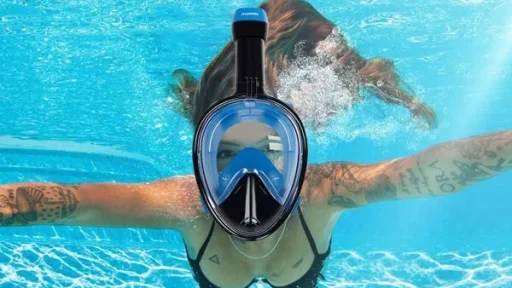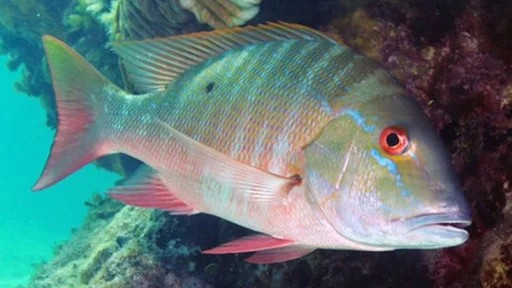Have you ever wondered How Long To Swim A Mile In The Ocean? It’s a question that intrigues many swimmers, from casual beach-goers to seasoned triathletes. Swimming a mile in the ocean is no small feat, and the time it takes can vary dramatically based on a multitude of factors. In this article, we’ll explore the ins and outs of ocean mile swimming, breaking down the elements that influence your swim time and offering insights to help you conquer this aquatic challenge.
Understanding Ocean Swimming

Before we dive into the specifics of swim times, let’s take a moment to appreciate the unique nature of ocean swimming. Unlike the controlled environment of a pool, the ocean presents a dynamic and ever-changing landscape for swimmers.
Differences Between Pool and Ocean Swimming
Swimming in the ocean is a whole different ball game compared to gliding through your local pool. In a pool, you have clear lane lines, still water, and a predictable environment. The ocean, on the other hand, is nature’s own swimming arena – vast, unpredictable, and teeming with life.
Importance of Ocean Conditions
Ocean conditions play a crucial role in your swimming experience. The sea isn’t just a big pool of saltwater; it’s a living, breathing entity with its own moods and rhythms. Understanding and respecting these conditions is key to not only completing your mile swim but doing so safely and efficiently.
Average Time to Swim a Mile in the Ocean
Now, let’s get to the heart of the matter – how long does it actually take to swim a mile in the ocean? Well, as with many things in life, the answer is: it depends. Let’s break it down by skill level:
Beginner Swimmers
For those new to ocean swimming, completing a mile can be a daunting task. Beginners might take anywhere from 45 minutes to an hour or more. Don’t be discouraged if you fall into this category – everyone starts somewhere!
Intermediate Swimmers
Swimmers with some experience under their belt might clock in between 35 to 45 minutes for a mile swim. At this level, you’re likely more comfortable with open water and have developed better technique.
Advanced Swimmers
Seasoned ocean swimmers or competitive athletes might breeze through a mile in 25 to 35 minutes. These swimmers have honed their skills and are well-adapted to the challenges of open water.
Remember, these are just ballpark figures. Your actual time can vary widely based on the factors we’re about to discuss.
Factors Affecting Ocean Swim Time
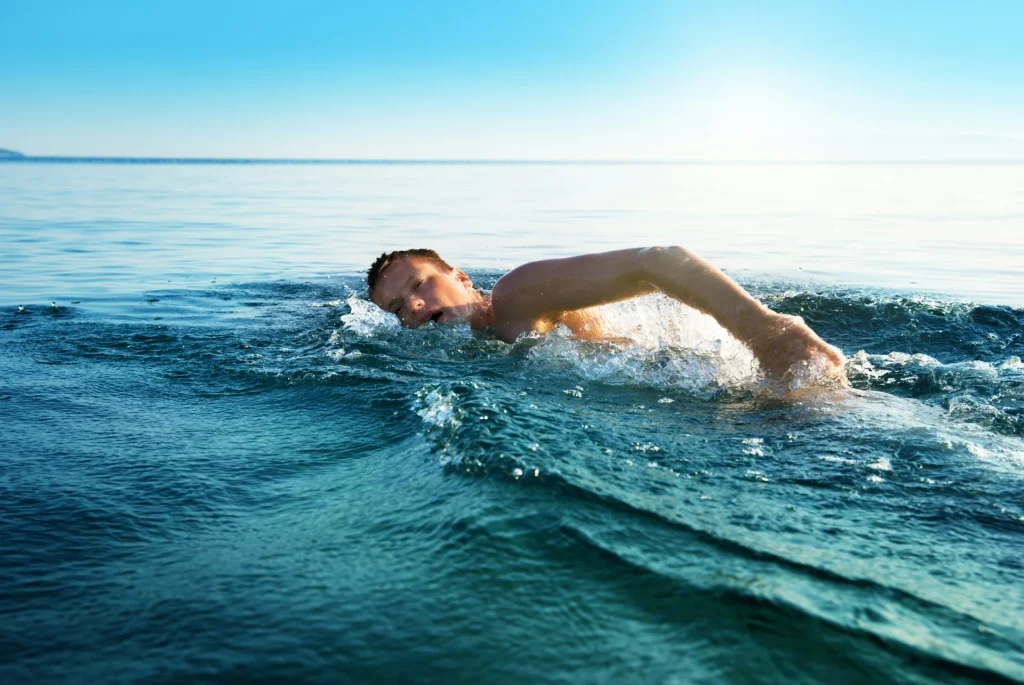
Ocean Conditions
The ocean is not a static environment, and its conditions can make or break your swim time.
1. Currents
Ocean currents can be your best friend or worst enemy. A favorable current can propel you forward, dramatically reducing your swim time. Conversely, swimming against a strong current is like trying to run up a down escalator – exhausting and time-consuming.
2. Waves
Waves add another layer of complexity to your swim. Small waves might not impact you much, but larger swells can slow you down significantly as you navigate over and through them.
3. Water Temperature
The temperature of the water affects your body’s performance. Cold water can sap your energy quickly, while very warm water might lead to overheating. Both extremes can slow you down.
Swimmer’s Skill Level
Your personal abilities play a huge role in determining your swim time.
1. Technique
Efficient swimming technique is crucial. The better your form, the less energy you’ll waste and the faster you’ll go.
2. Endurance
Ocean swimming requires stamina. The stronger your endurance, the better you’ll maintain your pace over the mile distance.
3. Experience in Open Water
Familiarity with open water swimming can significantly impact your time. Experienced ocean swimmers are better at reading the water and adapting to changing conditions.
Equipment
The gear you use can make a difference in your swim time.
1. Wetsuits
Wetsuits provide buoyancy and warmth, which can help you swim faster and conserve energy, especially in colder waters.
2. Goggles
Good visibility is essential for efficient swimming. The right goggles can help you sight better and stay on course.
3. Swim Caps
A swim cap reduces drag and keeps your hair out of your face, contributing to a smoother, faster swim.
Mental Preparedness
Don’t underestimate the power of your mind in determining your swim time.
1. Confidence
Feeling confident in your abilities can help you maintain a steady pace and overcome challenges.
2. Ability to Stay Calm
The open ocean can be intimidating. Staying calm and focused is crucial for maintaining your rhythm and efficiency.
Navigation
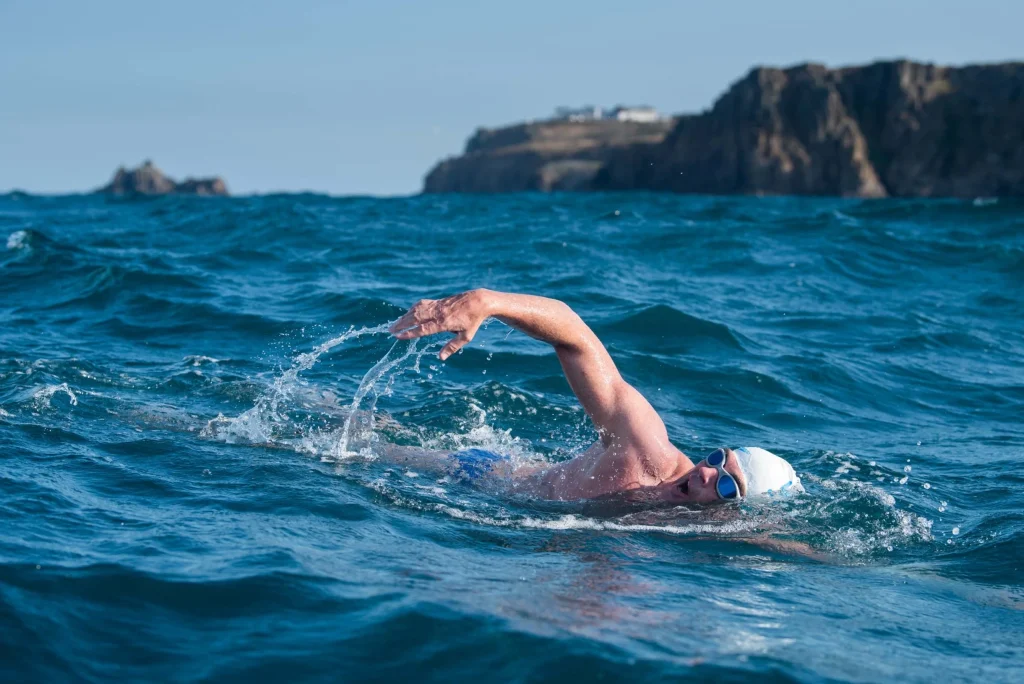
In the open water, there are no lane lines to guide you.
1. Sighting Techniques
Regularly looking up to sight landmarks helps you stay on course. Poor sighting can lead to zigzagging, which adds distance and time to your swim.
2. Staying on Course
Swimming in a straight line is harder than it sounds in the open ocean. The ability to maintain your direction can significantly reduce your overall swim time.
Training for Ocean Mile Swims
If you’re looking to improve your ocean mile time, focused training can make a world of difference.
Building Endurance
Start by gradually increasing your swim distances in the pool. Incorporate interval training to boost your cardiovascular fitness.
Improving Technique
Work on your stroke efficiency. Consider taking lessons or joining a swim club to refine your technique under expert guidance.
Open Water Practice
There’s no substitute for actual ocean swimming. Try to get as much open water practice as possible, focusing on sighting and adapting to different conditions.
Safety Considerations
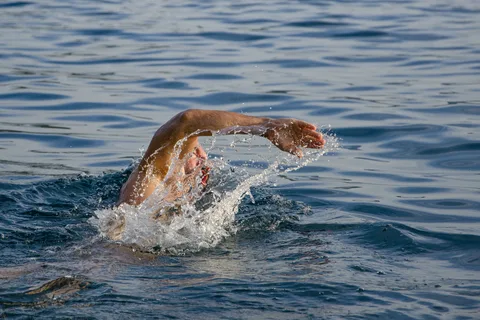
While chasing faster swim times is exciting, safety should always be your top priority.
Swimming with a Buddy or Group
Never swim alone in the ocean. Having others around adds a crucial layer of safety.
Knowing Your Limits
Be honest about your abilities and don’t push yourself beyond what’s safe. It’s okay to build up to a mile swim gradually.
Understanding Ocean Hazards
Educate yourself about potential dangers like rip currents, marine life, and changing weather conditions.
Conclusion
Swimming a mile in the ocean is an adventure that combines physical challenge with the raw beauty of nature. The time it takes can vary widely, influenced by a complex interplay of environmental factors, personal skills, and preparation. Whether you’re aiming to complete your first ocean mile or looking to shave minutes off your personal best, remember that every swim is unique. Embrace the journey, respect the ocean, and most importantly, stay safe while pursuing your aquatic goals.
FAQs
- Q: Can I swim faster in the ocean than in a pool? A: It depends on the conditions. With favorable currents, you might swim faster in the ocean. However, waves and other factors often make ocean swimming slower than pool swimming.
- Q: How often should I sight during an ocean mile swim? A: Generally, sighting every 6-12 strokes is recommended, but this can vary based on conditions and your experience level.
- Q: Is it safe to swim a mile in the ocean alone? A: It’s not recommended. Always swim with a buddy or group for safety, especially when tackling longer distances in open water.
- Q: How can I prepare for my first ocean mile swim? A: Start with pool training to build endurance, gradually introduce open water swims, practice sighting, and familiarize yourself with ocean conditions.
- Q: Do I need a wetsuit for a mile ocean swim? A: It depends on the water temperature and personal preference. Wetsuits provide warmth and buoyancy, which can be beneficial, especially in colder waters.
Read More:
Dorado Fish Decoded: Unveiling the Secrets of This Ocean Acrobat
Grouper Fish: The Giant of the Reef and Its Crucial Ecological Role
TriggerFish: The Ocean’s Living Locks and How They Got Their Name
Colonel Fish: Unraveling the Secrets of This Unique Marine Species



